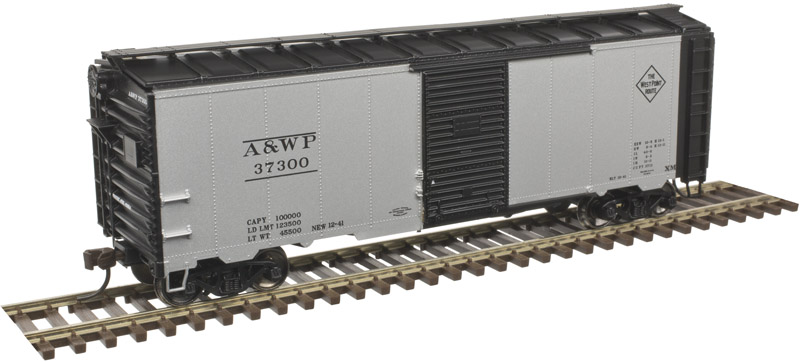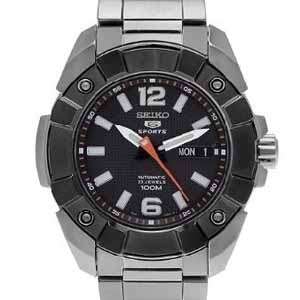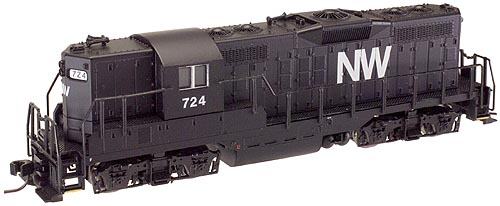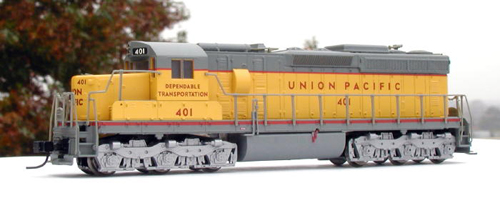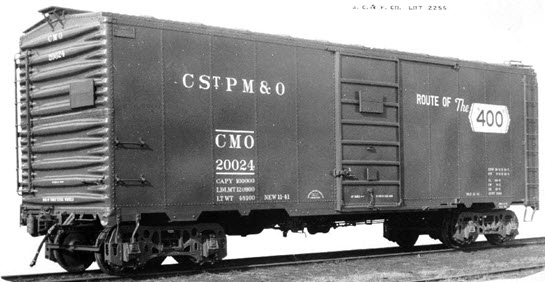Body Style Information: Quick and easy assembly.
Highly detailed body with molded ladders and grab irons.
One-piece underframe with full brake detail.
Quality painting/printing of prototypical paint schemes.
Prototype Information: The Association of American Railroads had been establishing design standards for freight cars since the early part of the century. Each new design standard meant higher capacity, lighter, more durable cars.
The Modified 1937 AAR boxcar design was a result of the industries continued search for more freight volume per carload. The real first attempt at a standardized design had been the 1932 ARA steel boxcar with an inside height of 9'-4" . In 1936 the board of the AAR approved the 1937 AAR design with a 10'-0" inside height. This became a standard throughout the industry.
The Modified 1937 AAR boxcar design was a result of the industries continued search for more freight volume per carload. The real first attempt at a standardized design had been the 1932 ARA steel boxcar with an inside height of 9'-4" . In 1936 the board of the AAR approved the 1937 AAR design with a 10'-0" inside height. This became a standard throughout the industry.
Road/Company Information: 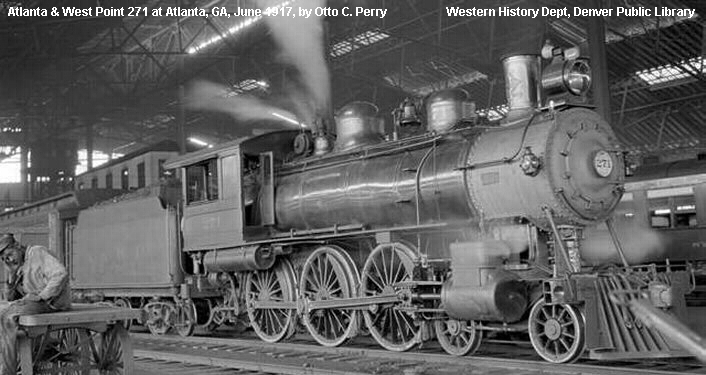 The A&WP was half of “The West Point Route” linking Atlanta, Georgia with Montgomery and Selma, Alabama. The A&WP covered the route from Atlanta 91 miles west to West Point on the Georgia-Alabama border. The other half of the West Point Route was the Western Railway of Alabama (or WofA for short.) Both West Point Route roads were controlled by the Georgia Railroad since the 19th century. It was common for locomotives of all three roads to be seen on each other’s lines. A&WP was the smallest of the three and had a fleet of just a dozen locomotives. Despite that, operations had a very “mainline” appearance.
The A&WP was half of “The West Point Route” linking Atlanta, Georgia with Montgomery and Selma, Alabama. The A&WP covered the route from Atlanta 91 miles west to West Point on the Georgia-Alabama border. The other half of the West Point Route was the Western Railway of Alabama (or WofA for short.) Both West Point Route roads were controlled by the Georgia Railroad since the 19th century. It was common for locomotives of all three roads to be seen on each other’s lines. A&WP was the smallest of the three and had a fleet of just a dozen locomotives. Despite that, operations had a very “mainline” appearance.
The pride of the A&WP steam fleet included a half dozen heavy Mikados for freight and four Pacifics for passenger service. The replaced a fleet of nine 4-6-0’s and a single Mogul out on the road. 0-6-0’s and 0-8-0’s did the switching. The A&WP was fully dieselized in 1952. A&WP’s passenger service claim to fame was the Southern Railway’s Crescent, a New York to New Orleans train that traveled the entire length of the A&WP. This routing (which also included WofA and L&N) was preferred because it was shorter than an all-Southern Railway route and it served the Montgomery and Selma areas. This train ran until 1970. Since A&WP’s parent Georgia Railroad was controlled jointly by L&N and Seaboard Coast Line (previously ACL,) they all gradually adopted the Family Lines image in the 1970s. In 1983, all of the Family Lines roads were combined into Seaboard System.

The pride of the A&WP steam fleet included a half dozen heavy Mikados for freight and four Pacifics for passenger service. The replaced a fleet of nine 4-6-0’s and a single Mogul out on the road. 0-6-0’s and 0-8-0’s did the switching. The A&WP was fully dieselized in 1952. A&WP’s passenger service claim to fame was the Southern Railway’s Crescent, a New York to New Orleans train that traveled the entire length of the A&WP. This routing (which also included WofA and L&N) was preferred because it was shorter than an all-Southern Railway route and it served the Montgomery and Selma areas. This train ran until 1970. Since A&WP’s parent Georgia Railroad was controlled jointly by L&N and Seaboard Coast Line (previously ACL,) they all gradually adopted the Family Lines image in the 1970s. In 1983, all of the Family Lines roads were combined into Seaboard System.
Brand/Importer Information: In 1924 Stephan Schaffan, Sr. founded the Atlas Tool Company in Newark, New Jersey. In 1933 his son, Stephan Schaffan, Jr., came to work for his father at the age of sixteen. Steve Jr. built model airplanes as a hobby and frequented a local hobby shop. Being an enterprising young man, he would often ask the owner if there was anything he could do to earn some extra spending money. Tired of listening to his requests, the hobby-store owner threw some model railroad track parts his way and said, "Here, see if you can improve on this".
Atlas has made a ton of wonderful products throughout the years and we often get questions one whether we have run a certain road name on a particular model. It should be noted that Atlas locomotives and rolling stock are greatly appreciated for their superior operating and running characteristics. Atlas products are also well known for their outstanding collectability not only due to their superior prototypical workmanship, details and decoration, but because there are relatively so few of them made. Each and every production run has been carefully built to market demand, meaning almost every piece in any given run is sold out by Atlas on arrival or shortly thereafter, thus creating a built in collectors market.
Atlas has made a ton of wonderful products throughout the years and we often get questions one whether we have run a certain road name on a particular model. It should be noted that Atlas locomotives and rolling stock are greatly appreciated for their superior operating and running characteristics. Atlas products are also well known for their outstanding collectability not only due to their superior prototypical workmanship, details and decoration, but because there are relatively so few of them made. Each and every production run has been carefully built to market demand, meaning almost every piece in any given run is sold out by Atlas on arrival or shortly thereafter, thus creating a built in collectors market.
Item created by: gdm on 2019-08-30 13:12:05. Last edited by gdm on 2020-05-07 00:00:00
If you see errors or missing data in this entry, please feel free to log in and edit it. Anyone with a Gmail account can log in instantly.
If you see errors or missing data in this entry, please feel free to log in and edit it. Anyone with a Gmail account can log in instantly.


